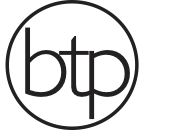This is the last of the four world-renowned Drawing Support books by sociologist Professor Bill Rolston, first published in 2013. Each of the books is an important and unique historical record of imagery relating to conflict and peace.
Almost twenty years after the 1994 ceasefires in Northern Ireland and fifteen years since the signing of the historic Good Friday or Belfast Agreement, loyalists and republicans continue to paint murals as they have done - in the case of loyalists - since 1908, and - in the case of republicans - since 1981.
But the themes have changed. Where once military imagery dominated, especially in loyalist murals, now artists on both sides select from a wider palette when choosing themes. There is still a strong political message in many of the murals as each community seeks to come to terms with the compromises necessary for peace and the slow task of conflict transformation.
This unique collection of photographs explores the changes in mural painting in the last decade and briefly considers other sources of mural painting which have emerged during the period.
Contents
Introductory essay:
Murals in the North of Ireland - the background; murals and ‘the troubles’; peace process; the role of the state - re-imaging; a mixed economy of mural painting; the murals.
Republican murals:
Military/memorial; hunger strike; history; mythology; state force; children and young people; women; culture; elections; international; prisoners.
Loyalist murals:
Military/memorial; home rule; first world war; war; identity and culture; victims/peace.
Re-imaging:
Other murals.
12 pages of text, 60 pages of photographs (114 plates).

